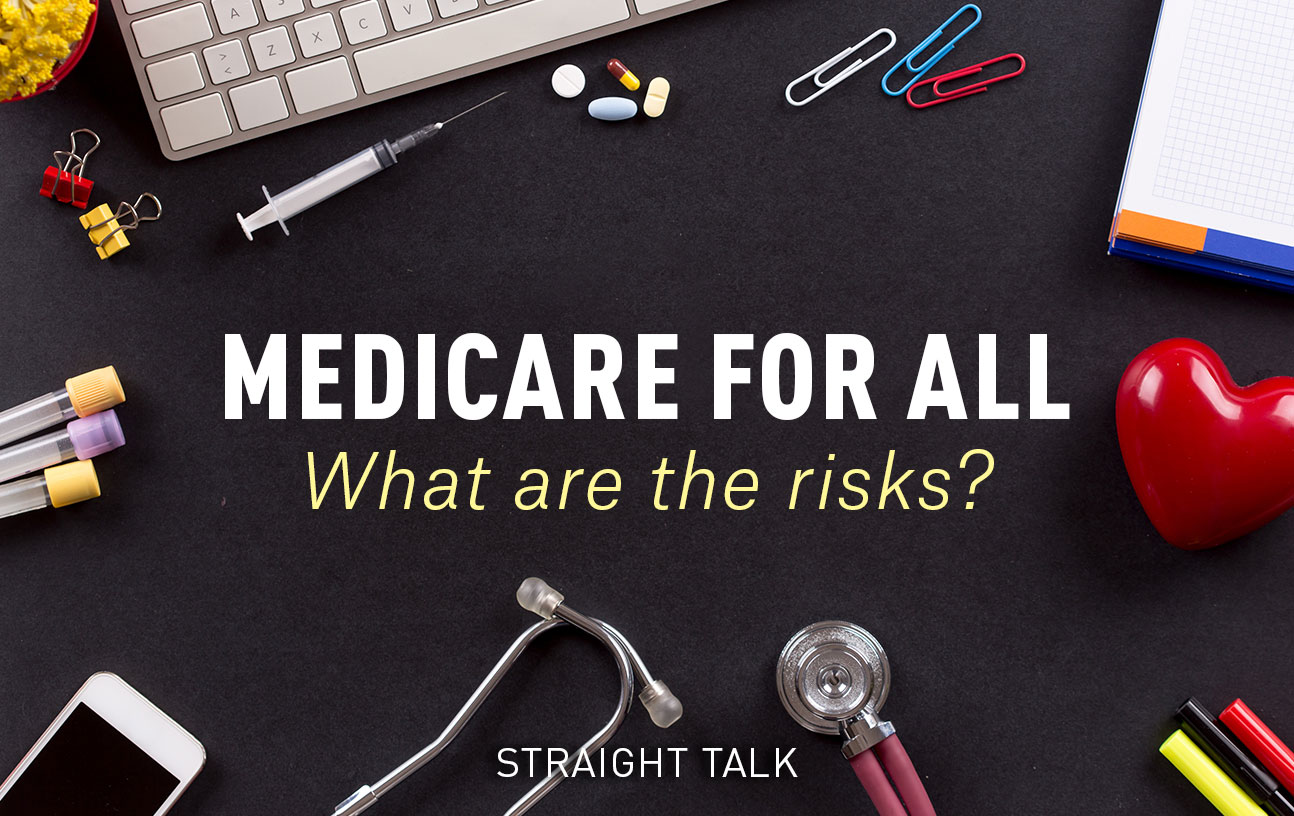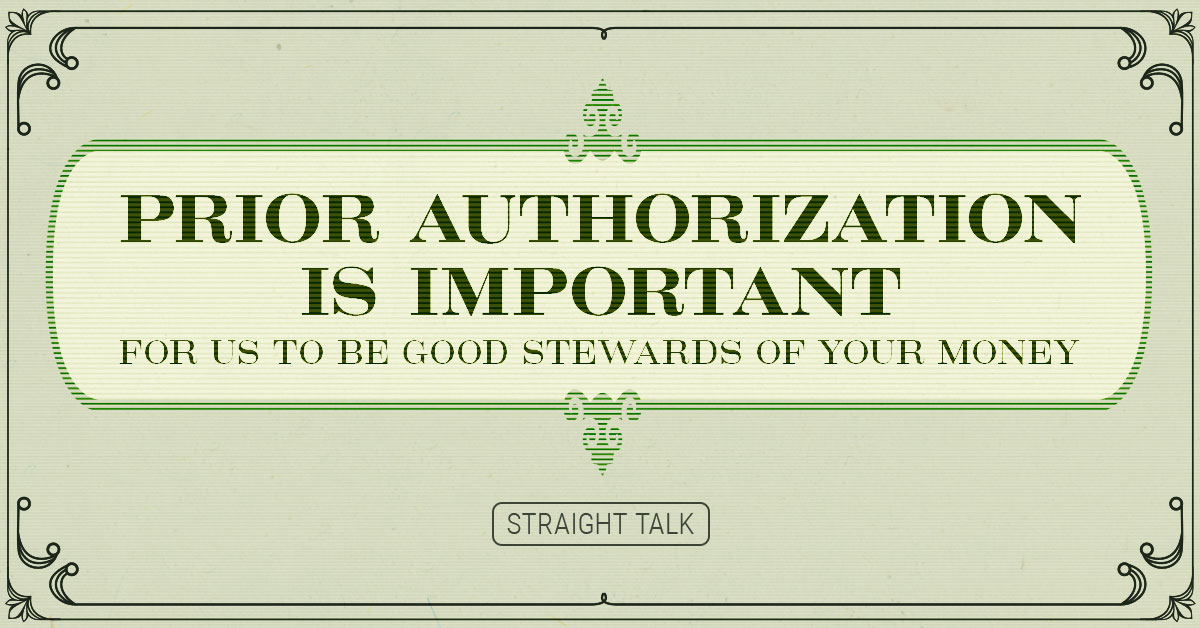I watched the Affordable Care Act completely change the way health insurance is paid for and delivered over the past decade. Today, I think it’s prudent to apply some of what I’ve learned on those front lines to the current healthcare debate: Medicare for All.
As you might expect, there are many risks and many unknowns in this proposed massive undertaking that would re-route 20% of our country’s Gross Domestic Product (GDP).
Here are the top 10 things I believe will have to be carefully thought out before such a program has a chance of success.
-
- Without a ton of modifications to the existing Medicare program, government-issued Medicare for All will leave people with much worse coverage than they have already. In fact, if insurance companies tried to offer coverage mirroring Medicare Parts A + B + D, they wouldn’t be allowed to sell it on healthcare.gov or even on Covered California because it wouldn’t satisfy the minimum requirements of those Exchanges. And according to the Commonwealth Fund’s definition of what it means to be UNDERinsured, Medicare for All would leave people with health coverage that would make them UNDERinsured compared to having quality private coverage. Straight government-issued Medicare is simply too skimpy for most people.
- Medicare enrollees reporting the highest satisfaction are almost always those enrolled in PRIVATE Medicare Advantage plans or PRIVATE supplemental plans. JD Power’s 2019 numbers also show that the LONGER seniors are enrolled in private Medicare plans, the more they like their coverage. 2019 satisfaction levels of those enrolled in private Medicare plans were 79.5% overall, and almost 85% for longer-tenured members.
- Government healthcare programs (Medicare and Medicaid) reimburse healthcare providers at significantly lower rates than private insurance, which means private insurance heavily subsidizes these programs to maintain the current levels of safety, quality, access and capacity in the U.S. healthcare system. If everyone is on a government-run healthcare program, providers will see their payments drop significantly. And we are likely going to see cuts in either staffing, capacity, services, safety or access as a result.
- Medicaid, the payer for 75 million Americans, reimburses hospitals and docs at a 20-25% lower rate than CURRENT Medicare rates. It would cost $100s of billions annually just to move those insured through Medicaid UP to Medicare for All.
- While polling earlier in 2019 showed a 56% approval rating for a “Medicare for All”-type program, that support dropped dramatically (into the teens or 20s) when pollsters mention that such a program would raise taxes, limit insurance choices and/or lead to delays in care (slide 11). ALL of these things happen under government-run healthcare programs in other developed nations like Canada or the UK.
- Under our current system, states can develop what are called “innovation waivers” that let them, with permission from the Feds, tweak their Medicaid programs to best meet the unique needs of their population. After all, the Medicaid population in Louisiana looks very different from the Medicaid population in, say, New Hampshire. This approach establishes a federal set of program rules that states can tailor. This has been in the news a lot lately because many states are expanding their Medicaid programs contingent on adding state-specific workforce requirements. Under a universal, federally run program, states would lose the ability to set their own program criteria, and we’d end up with a one-size-fits-all solution that is supposed to be just as good for states like Louisiana, with very high levels of people living in poverty and needing access to Medicaid, as it is for higher-income states.
- At much lower payment levels, Medicare for All will make our already-existing doctor shortage even worse. The American Association of Medical Colleges is already projecting a shortage of 122,000 doctors by 2032 because the population is aging very quickly, and there are simply not enough doctors coming out of medical schools to take care of them all. Paying prospective doctors LESS, LESS, which would likely happen under Medicare for All, is going to make it harder to attract people to clinician jobs and a time when we need MORE physicians, not fewer.
- The Government’s version of Medicare wasted at least $52 billion in 2018, according to the Government Accountability Office. Yet this is the very administrator that would be in charge of everyone’s healthcare under Medicare for All.
- The Committee for a Responsible Federal Budget has analyzed the actual costs of Medicare for All and offered the following options to pay for it:
- 32% additional payroll tax (over existing taxes, both state and federal)
- 25% additional income tax (surtax)
- 42% Value Added Tax (VAT) on all transactions, retail and wholesale (this is before any targeted exemptions like medications or food)
- A $12,000 annual fee you pay out-of-pocket if you are not already on Medicaid or Medicare
- A 100% increase in all individual AND corporate income tax rates
- An 80% reduction in federal spending that is NOT related to healthcare (like eliminating three of the four major branches of the military)
- Allowing the national debt, which is over $22 trillion now, to increase to over $44 Trillion in the next decade — just for healthcare.
- Some combination of these adjustments.
- Every single government-run healthcare payer in the industrialized world (except the U.S.), from Canada to Germany to Italy to France to the United Kingdom, uses gatekeeper primary care to control costs and outlaws private major medical coverage. This would be a very different way than Americans are used to receiving healthcare with private insurance. So not only would you no longer have your Blue Cross coverage, this means you cannot access ANY healthcare or see a provider beyond your PCPs office without his/her permission. You are no longer in control of where you go for care. And this technique is popular because it cuts costs dramatically, while, of course, limiting choices. AND – single-payer healthcare doesn’t mean the consumers do not pay for anything. In many countries with government-run healthcare systems, people still have to buy their prescription drugs out of pocket.
Straight Talk is, as long as we’re going to have a grown-up conversation about tearing down our existing healthcare payer system and starting from scratch, it’s prudent to acknowledge the realities and risks that would come with the proposed new model.





Switching to pass through PBM’s would dramatically reduce costs and provide transparency. The reduced costs would make coverage more affordable, thereby providing more people with quality coverage. This would head off the surge of popularity of the government run single payer model. BCBS ought to leading this charge, if they in fact want to move away from the move to single payer. But sadly, as of now, BCBS doesn’t. The big PBM’s are snakes, and if your in bed with them, you will get bitten (sadly, this could eventually costs BCBS their business). The big PBM’s are essentially overpaid computer processors, soaking the public and taxpayers for billions. Again, BCBS needs to rethink their support of them. Serve the best interests of the public, and you will be rewarded.
Chris! I appreciate your comments!
First of all, there is no such thing as a “pass through PBM”. I’ve yet to meet anyone in the drug business working as a charity and providing their services for free. Everybody gets paid, either via spread pricing, rebates, or higher per dispensed drug fees. No free lunch.
It’s not widely known, and often forgotten, that the 2010 passage of the ACA contained a rule that put health insurance companies into very small boxes when it comes to how they spend the money to run their business: A federal CAP on gross margins that typically means we have to spend 85% of all money coming in on nothing but actual healthcare costs: Docs, Hospital Bills and Drugs.
At the same time, the Feds created a new, still evolving standard for what constitutes a valid health insurance policy, including detailed requirements for drug coverage. It’s worth remembering that, only 20 or 30 years ago, health plans were required to cover very few drugs at all. In fact, today, Medicaid is still not required to cover drugs at all (although most states do it anyway). Not so for private health insurance or Medicare Part D plans, whose drug required coverage gets bigger every year.
In 2019, to produce a valid drug schedule for even our simplest health insurance plan requires us to purchase drugs from almost 1,200 different drug companies. That’s 12 times as many companies as we contract hospital coverage with, for example. From those 1,200 companies, we are required to purchase almost 10,000 different drugs. That’s just for a single, simple health plan. If you don’t think doing something like that is administratively complex and expensive, they you are not serious in your analysis. AND we still have to figure out how to fund our entire overhead and administration for everything ELSE we do, including complying with the 90,000 pages issued via the ACA within 15% gross margin. Our overhead is very tight for our mission.
You might also be thinking “Well, BCBSLA is a huge insurance company, surely they can handle passing through and buying their own prescription drugs!” You’d be wrong. AS a drug purchaser in the drug industry, we would be buying $900m a year in prescription drugs and that does not even get us a notice in the drug world radar. The US pharma market was worth $975 BILLION last year, the three biggest PBM’s, including the one we use, all bought more than $275 BILLION in drugs each, that’s almost 300 times as much as we did.
So, what are the odds that we could, at our size, be competitive in purchasing and contracting with the 1,200 drug companies we are REQUIRED to do business with for the 10,000 drugs we need to cover all on our own, within the limits of 15% gross margin, AND negotiate our own “better deals” with 1,200 drug companies while staying within 15% gross margin? You already know the answer.
We have hard numbers that show our PBM’s efforts and data products reduce our healthcare spending by $350 per person per year. In other words, if we had to (somehow) do all this contracting and negotiating ourselves, and lose access to their data services, we’d have to raise almost 1 million people’s rates by $350 per year each. Not lower them.
Now, are the flows of money through the prescription drug system simple, or transparent? No they are not. It’s far from an ideal system, believe me. But complexity brought through regulation has a price all its own, and we are all paying it right now for our meds.
The combination of required drug coverage, overhead restrictions, and a booming drug business embraced wholeheartedly by docs who want the “best drugs” for their patients have brought us to this. If there is a clear way to fix it, I can’t see it. But trust me when I say, there is no free lunch.
Great question!….thanks..mrb
Excellent! Too many think it will be free! Many want something for nothing! Medicare for all would also hurt seniors who are presently on Medicare! Socialism would be a big step down for our country! The people who work and want to work or have worked and are retired would suffer for those that want something for nothing!